
In Asia people have an inherent love for gems and jewellery and hence we see some of the most beautiful and valuable jewellery designs of investment quality. What few know is that of all the gold worn today approximately 85% is recycled. What this ultimately means is that you could be wearing the same gold as a past King, Queen, Pharaoh or Emperor! The history of jewellery is one of the most fascinating to unravel as we all have a connection, sentimental or otherwise to the jewellery we wear.
As a universal form of adornment, jewellery has survived from prehistoric times. The earliest forms were worn as protection from the dangers of life or as a mark of status or rank.

In the ancient world the discovery of how to work with metals and the development of many intricate techniques was important in the advancement of the art of jewellery. Metalworking techniques have changed over time but many of these processes remain much the same. Even modern mass production techniques are based on principles used in jewellery thousands of years ago.
We are fortunate that in early times gold and jewellery, considered valuable, was buried with the dead so as to accompany its owner into the afterlife. From this we are able to learn much about the people, their styles and what was considered important in their cultures.
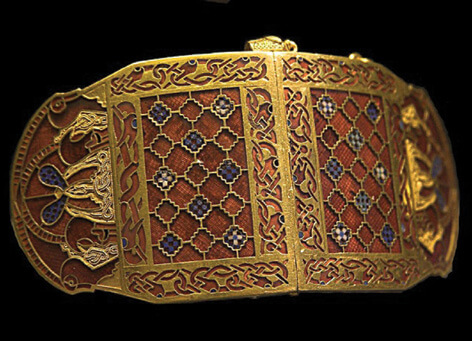
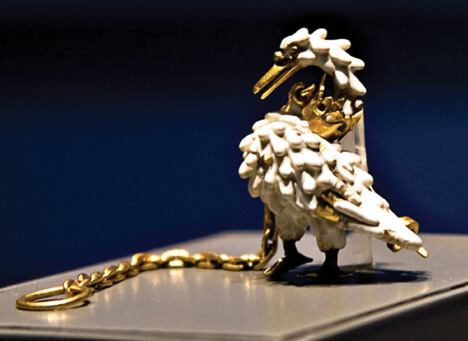
The jewellery of the Middle-ages reflected an intensely hierarchical and status-conscious society. Only the royals or nobles were allowed to wear gold, silver and precious gems. More humble ranks wore base metals, such as copper or pewter. Glass was used together with natural gems for its colour and beauty and the fact that is was difficult to distinguish it from other minerals.
Few gems were faceted this early on but polished “en cabochon” a smooth facet-less style of cutting. Glass techniques also gained in popularity, especially the use of ground glasses fired at high temperature onto a metal surface – a technique now known as enamelling. This technique allowed goldsmiths to add bright colour to their designs as, historically, colour was one of the most important factors in determining value. Some jewels of this period had cryptic or magical inscriptions as life was short and dangerous and people believed in protective powers the gems offered.
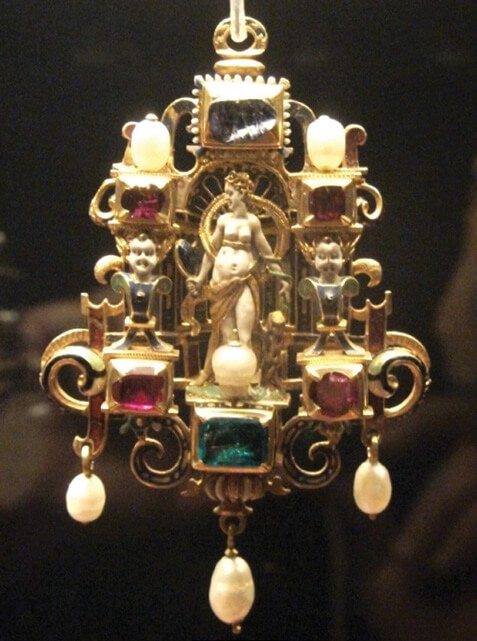

By the Renaissance many goldsmiths were trained as artists in sculpture and art and created some of the most amazing miniatures. Enamels were still very popular and often covered both sides of the jewel, and became more splendid, elaborate and colourful. This is when advances were made in cutting minerals which increased the beauty and value of gems and the beginning of faceted gems as we know them today. Many mythological figures became popular as well as the revival of intricate carving of minerals into cameos and intaglios which had been enjoyed by the Romans and other ancient civilisations.
Later changes in clothing fashion introduced new styles of jewellery. Global trade increased and new varieties of gems came to be worn and appreciated. Some of the most impressive pieces were large body ornaments while others more towards nature and a popular botanical movement.

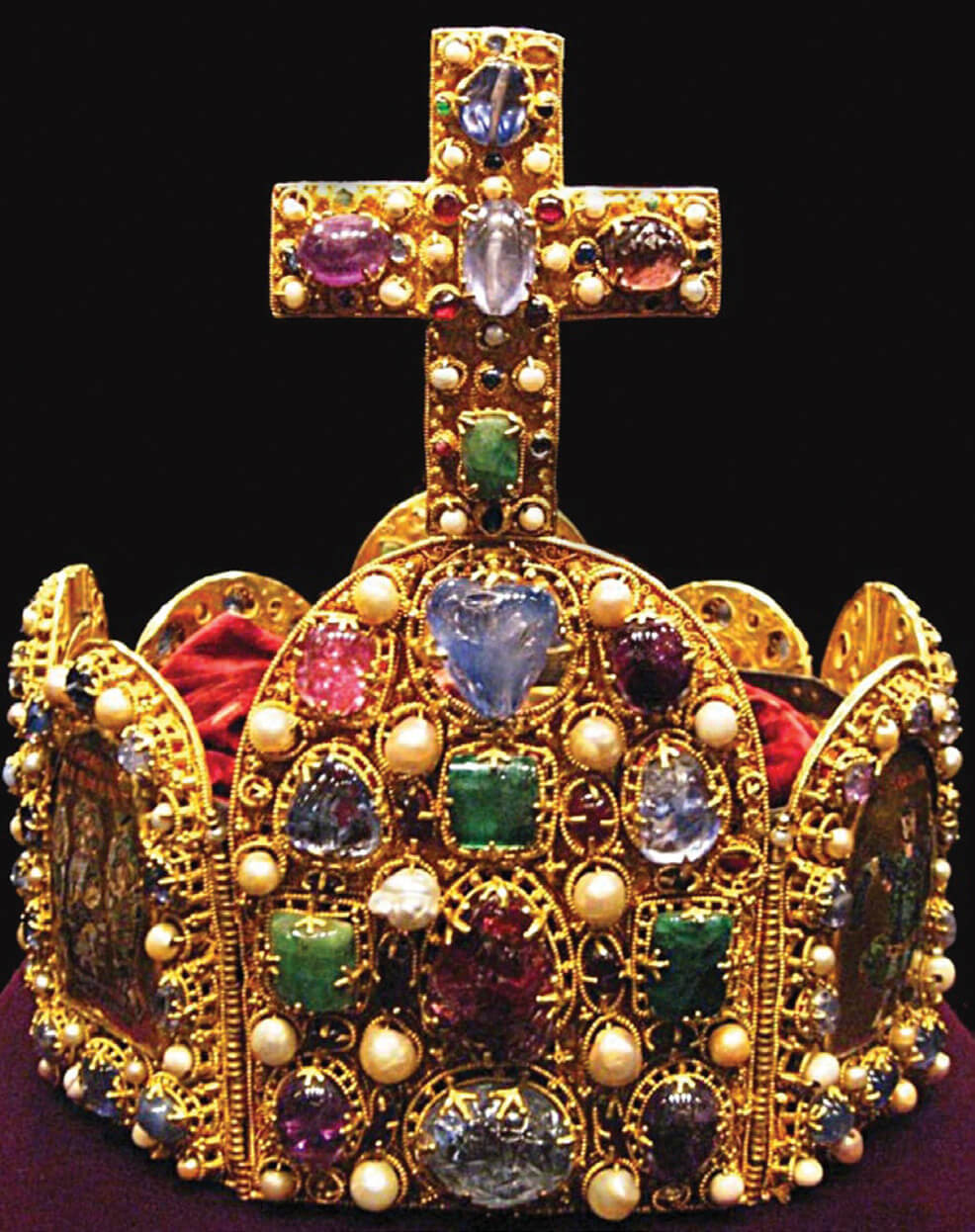
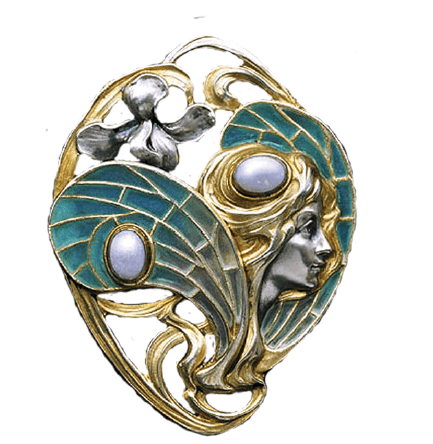
Diamonds, mounted in silver, began to sparkle more than ever and came to dominate jewellery design as magnificent sets were essential for court life. Around the 19th century there was a huge change both industrial and social, but for jewellery the classical and ancient styles from the past were revived and sought after stimulated by archaeological discoveries in Egypt and Rome. Many goldsmiths revived ancient techniques and imitated the discovered archaeological jewellery.
At the end of the 19th Century an arts and crafts movement developed in protest to the ever increasing advancements in industrialization. Jewellers focused on hand-crafting individual jewels with a variety of lesser known and less valuable minerals. Most gems were cabochons, not faceted, with less symmetrical and repetitive design and more focus on nature with soft flowing curved lines, women often blended with insects creating fantasy and an escape from reality. This developed into the famous Art Nouveau style.
The next important style was produced as a result in difficult
times through depression and war, when many craved for
glamour. This change in the times brought about a new and
different style with angular, geometric patterns which, in
contrast to Art Nouveau, celebrated the machine age, while
blending this look with the exotic elegance of the Near and Far
East.


Jewellery designs have changed faster in recent years with traditions being challenged by successive generations of independent jewellers who have an uphill task in striving to develop their own unique and distinguishable styles.
Technologies play a large part in the jewellery of today and as these new technologies are introduced at a relentless pace, many traditional jewellers struggle to remain current with new techniques and trends. As artists we would like to believe it is easier in a world where we have so much information at our fingertips but we also loose the space and serenity with the deluge of the information age has brought.
Many jewellery artists and aficionados enjoy travelling back in time, to the ornate highlights of the past, to discover how our ancestors lived and the beautiful jewellery they wore. Exploring the fascinating and creative directions jewellery has taken is both a source of endless inspiration as well as a breath of fresh air in our busy lives.
If you are an aspiring jewellery artist, the top thing you need to succeed (after mastering your skills!) is a good grasp of trends and themes. Exploring the rich world of jewellery through the ages can help you build the right vocabulary for a designer and even identify and combine themes that resonate with you to produce something new and distinct! The JDMIS certification in Epic Jewellery and Contemporary Trends was especially created by me to fulfil this important need.
Tanja M. Sadow G.J.G.
Dean and founder of the Jewellery Design and Management International School